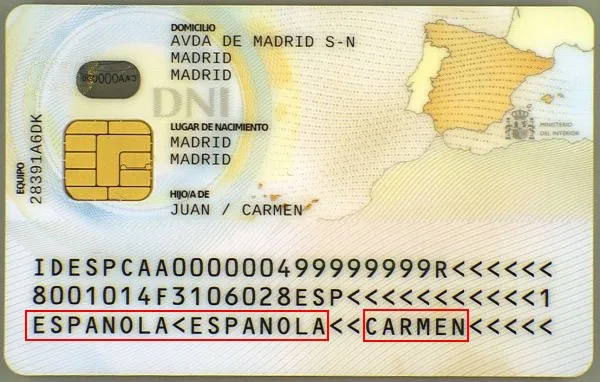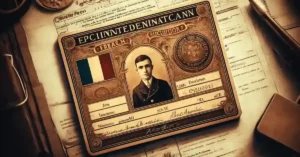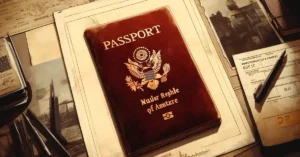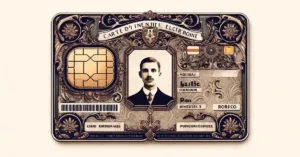The Spanish national identity card is an official document that allows any Spanish citizen to prove their identity and, as long as it is valid, their Spanish nationality, just like a passport.
The purpose of this card is to strengthen security and facilitate identification in electronic transactions, while reducing the risk of forgery.
So, how to verify a Spanish identity card and ensure that the presented document is authentic? Find out in this article!
Need more information on how to verify the authenticity of your ID documents ? Check out our comprehensive guide to verifying ID documents, which includes all the resources available !
Check 1: Verify a Spanish identity card by its overall appearance
The first step to verify a Spanish identity card when you have access to the original document is the general appearance: it must not show any signs of cutting, peeling, modification, or correction.
Pay particular attention to the area at and around the photo.
The new electronic identity card is in ID-1 format, which is the size of a credit card.
Check 2: Verify a Spanish identity card by cross-checking information
The second step to verify a Spanish identity card online: check the consistency of the information on the document.
Document Number
The document number can be found in two different places: at the top of the front side, and in the first line of the MRZ band.
It consists of 12 characters.
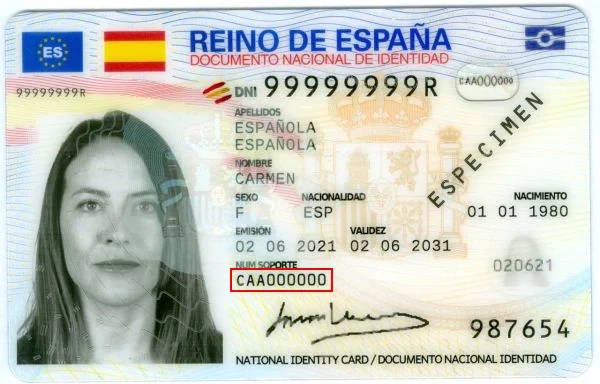
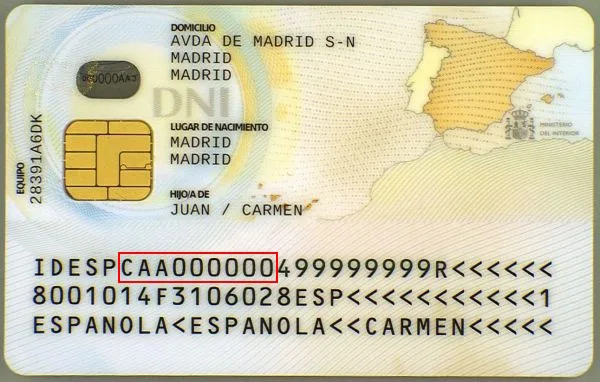
Date of Birth
The holder’s date of birth can also be found in two distinct places: in the middle of the front side of the card, and at the start of the second MRZ line in the YYMMDD format:

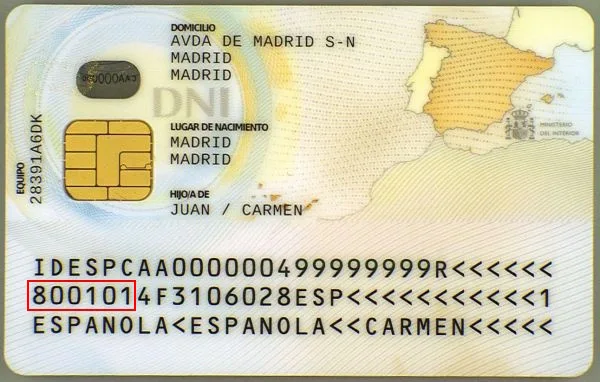
Surname and First Name(s)
Similarly, the surname and first names can be found on the front of the card as well as in the third line of the MRZ band:
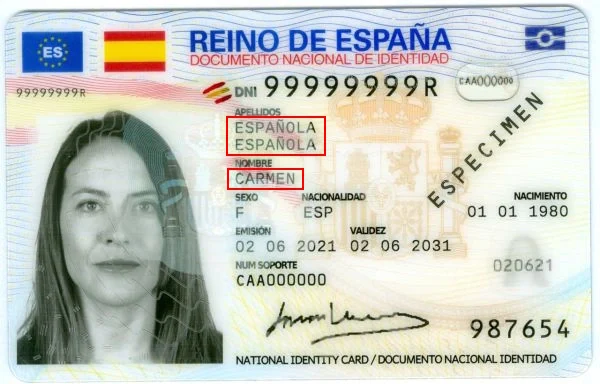
Card Expiry Date
Finally, the last element present twice on the card is the expiry date, found on the front as well as in the second MRZ line in the YYMMDD format:
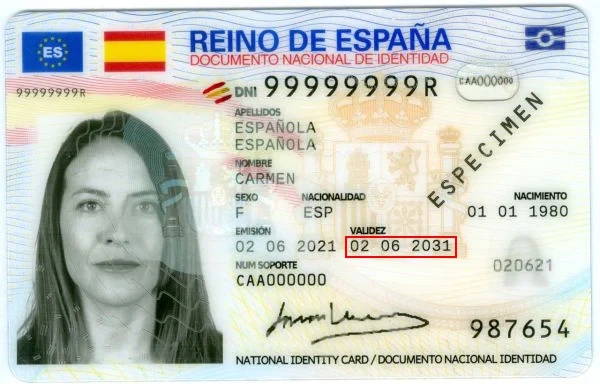
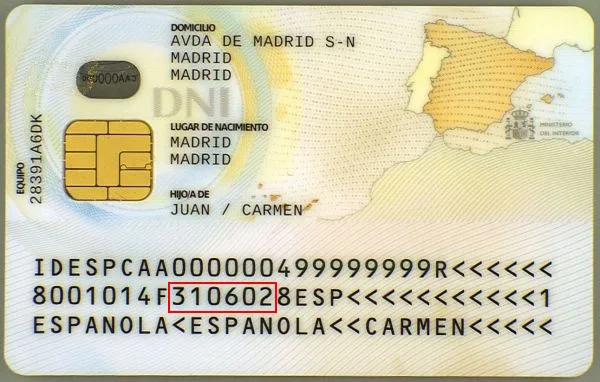
Check 3: Verify a Spanish identity card with its MRZ band
The lower part of the new Spanish identity card consists of three lines that reproduce the information on the card, with validation keys to prevent reading errors or forgeries.
Composition of the Spanish identity card’s MRZ band
First line

- Document Type: 2 characters, code indicating the document type, represented by the letters “ID”.
- Issuing Country: 3 characters, the ISO 3166-1 alpha-3 code of the issuing country.
- Card Number: 9 characters, unique card number.
- Check Digit: 1 character, check digit for the unique card number.
- Personal Number: 9 characters, personal number of the holder.
- End of Line: chevron characters “<” used to complete the line.
Second line

- Date of Birth: 6 characters, year, month, and day of birth in YYMMDD format.
- Check Digit: 1 character, check digit for the date of birth.
- Gender: 1 character, “M” or “F”.
- Expiry Date: 6 digits, card expiry date in YYMMDD format.
- Check Digit: 1 character, check digit for the expiry date.
- Country Code: 3 characters, ISO 3166-1 alpha-3 code of the holder’s nationality.
- Separator: 11 characters, “<“.
- Check Digit: 1 character, check digit of the concatenation of characters line 1 positions 6-15, line 2 positions 1-7, line 2 positions 9-15.
Third line

- Holder’s Surname and Given Names: surname and given names of the holder, starting with the family name followed by the first name. The family name and first name are separated by two “<” characters. In case of compound family names, compound first names or multiple first names, they are separated by a single “<” character. Spaces and apostrophes are replaced by the “<” character, and the name is truncated to 30 characters if necessary. Any accents present on the letters are removed. The line is then completed with the “<” character.
Verify a Spanish identity card with the MRZ line security keys
A Spanish identity card has 4 check digits (or security keys) that allow validating the preceding information.
They help prevent transcription errors or modifications, whether intentional or not.
How does the algorithm work?
The algorithm used to create and validate the check digits is common to all identity documents: characters have a weight, which is multiplied by a factor depending on their position in the string (7, 3, and 1).
Digits have their face value (“0” is 0, “1” is 1, etc., up to “9” which is 9), the chevron “<” also has a value of 0, while letters have weights starting at 10 for “A”, 11 for “B”, up to 35 for “Z”.
Example
Let’s take as an example the check digit of the date of birth of the specimen above.
The character string to validate is: “800101”.
To calculate the check digit we proceed as follows:
– “8” has a value of 8 and is in the first position, so multiply it by 7: 8 * 7 = 56
– “0” has a value of 0 and is in the second position, so multiply it by 3: 0 * 3 = 0, add to previous 56 to get 0 + 56 = 56.
– “0” has a value of 0 and is in the third position, so multiply it by 1: 0 * 1 = 0, add to previous 56 to get 0 + 56 = 56.
– 1 * 7 = 7 and 7 + 56 = 63
– 0 * 3 = 0 and 0 + 63 = 63
– 1 * 1 = 1 and 1 + 63 = 64
The total is 64, from which we take modulo 10 (the remainder of division by 10), which means keeping only the last digit, i.e. “4”.
Our check digit is therefore valid since 4 appears on the document!
Individuals, do you occasionally need to verify one or more identity documents ?
Professionals, do you need to integrate proof of identity validation into one of your business processes, including all European identity cards and global passports ?
Check 4: Verify a Spanish identity card with its physical security features
An identity document includes various elements that help validate its authenticity.
This is the final step to verify a Spanish identity card online, as it is the most detailed.
Front
Ultraviolet
What it is: Inks invisible to the naked eye but visible under UV light (365 nm).
How to see it: Use a UV lamp to reveal multicolored fluorescent patterns, logos, or information.
Purpose: These features are nearly impossible to replicate without specific inks and allow quick verification with the right tool.
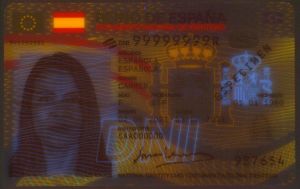
Optically Variable Mark (OVM)
Type 1: Variable laser image (CLI® / MLI®)
- What it is: An image that changes according to viewing angle, often used to display two faces or two pieces of information within the same square.
- How to see it: Tilt the document from side to side.
- Purpose: Very difficult to reproduce with simple printing; a strong proof of authenticity.
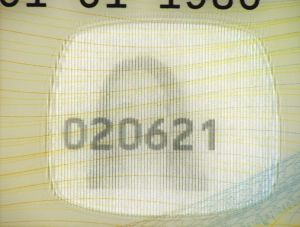
Kinegram®
Type 2: Kinegram®
- What it is: A hologram or dynamic metallic pattern embedded in the document.
- How to see it: Tilt the document under different lights.
- Purpose: Advanced protection against counterfeiting thanks to proprietary technology.
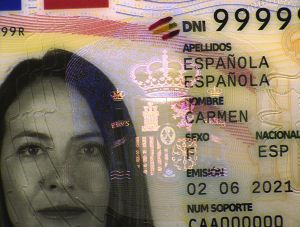
Security Film
What it is: A transparent protective layer sometimes featuring visual effects.
How to see it: Observe the document under grazing light to see reflections or patterns.
Purpose: Prevents modification of printed content and allows easy visual detection of any tampering.
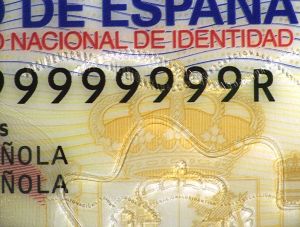
Biographical Data
What it is: Name, first name, date of birth, nationality, etc.
How to see it: Clearly printed on the front, often in the same area as the photo.
Purpose: Data to cross-check with the MRZ or a database, to verify consistency.
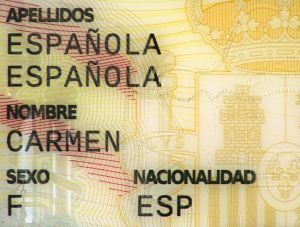
Face Photo
- What it is: Portrait of the individual, usually printed in black and white.
- How to see it: On the front, compare to the person present or other available photos.
- Purpose: Allows manual identification and is often integrated into biometric systems.
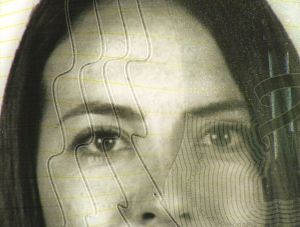
Printing Process
What it is: Techniques such as offset printing, screen printing, laser engraving (for polycarbonates).
How to see it: Observe under a microscope or magnifying glass the fine patterns or inks used.
Purpose: Some methods (like laser engraving) cannot be reproduced with a standard printer.
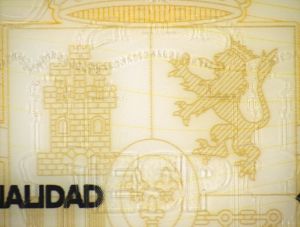

Back
Ultraviolet
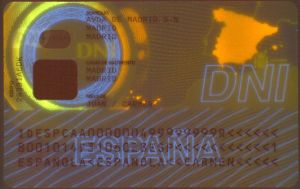
Biographical Data

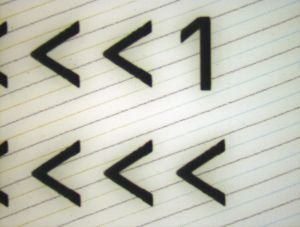
Conclusion
You now have all the keys to verify a Spanish identity card online and ensure it is authentic!
No specialized equipment is necessary: a bit of vigilance, time, and you can avoid most of the frauds encountered daily!
You can also use our service which will perform the checks in seconds via our web application: results are available directly in the app and as a PDF report!
Individuals, do you occasionally need to verify one or more identity documents ?
Professionals, do you need to integrate proof of identity validation into one of your business processes, including all European identity cards and global passports ?

